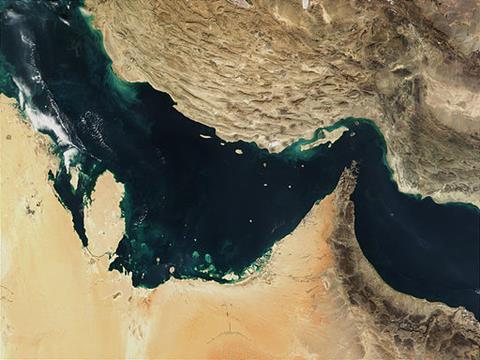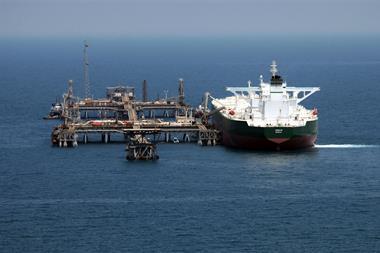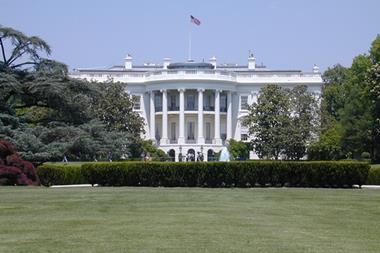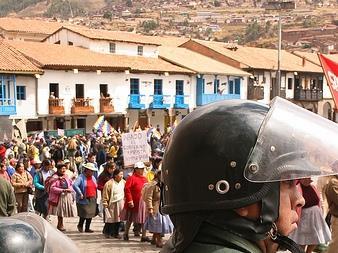Troop deployments are escalating in the Persian Gulf. But while the probability of conflict anytime soon is minimal, economic sanctions are hampering multinational businesses and the long term prospects are anything but rosy

Burdened by sanctions and eying a sizeable portion of the US Navy moving into the Persian Gulf, Iran has now resumed negotiations over its nuclear programme.
But as tensions continue to simmer is war likely to break out? And if so what are the risk management implications?
In Istanbul on April 14th Iranian diplomats met for discussions with a delegation from the US, Britain, France, China, Russia and Germany, after fifteen months of silence.
European Union Foreign Policy Chief Catherine Ashton described the talks as ‘constructive and useful’. In reality they achieved little other than an agreement for further talks to take place in Baghdad on May 23rd.
So while the men in suits spoke behind closed doors, men in uniforms continued to amass around the Strait. A recent article in the Wall Street Journal reviewed the build-up, which included the doubling of the US fleet of Avenger-class mine-sweeping ships and the fitting of US warships with sophisticated weapons to counter Iranian torpedoes and small patrol boats.
WSJ also reported that the US military is “rushing to upgrade its largest conventional bomb to better penetrate fortified [Iranian] underground facilities.” Prior to the article, the US navy had already doubled the number of aircraft carriers in or near the Persian Gulf to four.
It’s easy to see why the US is so keen to pacify this region when you consider that 17m barrels of crude oil pass out of the Persian Gulf through the Strait of Hormuz each day. This represents 35% of global seaborne oil shipments and 20% of the total oil traded globally, according to the U.S. Energy Information Administration.
Meanwhile, economic sanctions on Iran are beginning to pile up. And these are making life difficult for business.Iran has been subject to US sanctions since 1995, and has endured four separate rounds of UN sanctions since 2006.
The Supreme Leader of the Islamic Revolution Ayatollah Seyyed Ali Khamenei issued a fatwa declaring that the production, stockpiling, and use of nuclear weapons are prohibited in Islam
New US sanctions on the Central Bank of Iran (CBI) coupled with an EU oil embargo earlier this year have had a limited effect so far but a stricter regime could force Iran back to the negotiating table.
As Torbjorn Soltvedt, Middle East analyst at Maplecroft, explains: “With inflation rising towards 50% according to unofficial estimates, the prospect of a more comprehensive [economic sanction] alongside an oil embargo and US sanctions targeting the central bank could prove disastrous for the Iranian economy.”
Still it remains unclear how far away Tehran is from building a nuclear bomb. The country is a signatory of the Treaty on the Non-Proliferation of Nuclear Weapons (NPT), and recently, the Supreme Leader of the Islamic Revolution Ayatollah Seyyed Ali Khamenei issued a fatwa declaring that the production, stockpiling, and use of nuclear weapons are prohibited in Islam.
While Iran will attend Baghdad in May with one eye on sanctions the regime in Tehran may be unwilling to relent on its nuclear ambitions.
According to Soltvedt: “Iran’s controversial nuclear programme remains one of the few sources of support for the regime… [and] as the nuclear programme could guarantee the long term survival of the regime and bolster its leverage in the region, it is unlikely that Iranian leaders will cave in to external pressure.”
He says the probability of imminent Iranian provocation is slim. “One of the key reasons for the Iranian regime to avoid a military conflict with the US is the high probability of air and missile strikes against its nuclear facilities in the event of a conflict…such a decision would only make sense if oil exports were to completely grind to a halt.”
Despite the growing US military presence in the region, for its part, the US is unlikely to go so far as to invade Iran. This isn’t the same as Iraq or Afghanistan. Iran has a standing army of 545,000 men, as well as the loyal and well-trained Revolutionary Guard comprising an additional 125,000.
Despite the growing US military presence in the region, for its part, the US is unlikely to go so far as to invade Iran.
According to Soltvedt, the likelihood of the US initiating military action against Iran is extremely low: “Current US efforts to place the Iranian regime under greater pressure are likely to continue to focus on strengthening sanctions targeting the Iranian central bank and Iranian oil exports. Furthermore, US decision makers are likely to be mindful of the fact that overt military action would almost certainly strengthen the Iranian regime’s position domestically.”
He added, however, that an “Israeli strike against Iranian nuclear facilities is becoming ever more likely. Adding that the impact of international sanctions on the Iranian economy and the “operational challenges” of a unilateral strike, mean that Israel is only likely to resort to overt military action as a last resort.
Significantly, the Israeli Air Force lacks some of the US Air Force’s key capabilities such as long range strategic bombers and heavy “bunker buster” bombs.” This means that were the Israelis to carry out a pre-emptive strike, they would likely succeed in delaying Iran’s programme, but not in destroying it altogether.
However, a military confrontation in the region is not completely out of the question. While there are good reasons for Iran to avoid a conflict with the US there is a risk that military posturing could spark an armed conflict.
Iran’s show of force in the Strait of Hormuz in early 2012 and its threats to close the strait show the degree to which Tehran is concerned about the potential impact of an oil embargo and economic sanctions.
If pressured further, Iran’s attempts to illustrate its resolve through military manoeuvres in the Strait of Hormuz are likely to lead to greater regional instability.
In a worst case scenario, this could lead to an armed conflict with the US and possibly Israel.
In the long term a continuation of Iran’s nuclear programme could potentially spark a cold war between Iran and Saudi Arabia. And, even more worryingly, faced with the prospect of a nuclear capable Iran in the next five years, Gulf Cooperation Council (GCC) member states are likely to accelerate defence spending and consider embarking on nuclear programmes of their own.
So the importance of this month’s talks with the West cannot be overstated.
Perhaps a compromise is needed that allows Iran to continue its nuclear programme with the unfettered oversight of the International Atomic Energy Agency (IAEA) to ensure that it doesn’t develop a weapong and spark a regional arms race.




















No comments yet